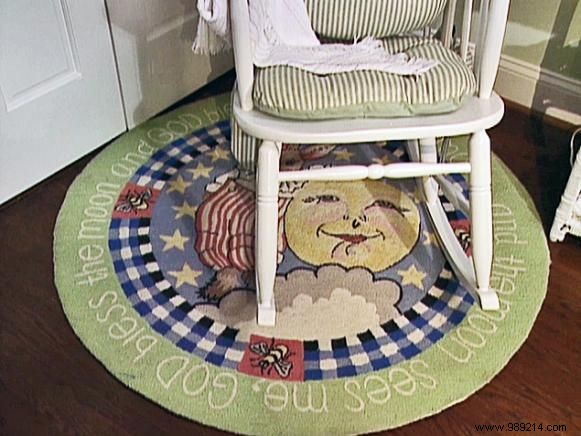
A good first step in nursery design is deciding on a theme. You might find a rug or print that you like and that inspires you, or you might want to go to your local library, bookstore or stationery store. Inspiration abounds - you just have to know where and how to look for it.
Once you have decided on a theme for the nursery, the next step is to choose a color scheme. Researchers say that babies only see three colors:black, white and red. Most people, however, prefer a more delicate palette for a baby's room. You may want to create a nursery suitable for this baby and any others you may have in the future, and one that would work for an older child as well.
In this example, fabrics include toile, gingham, and tic. The walls are painted a soft green taken from the colors of the carpet. Green is a color that reminds us of nature, of bringing the outside inside. After allowing the base coat to dry completely (at least 24 hours), use painter's tape to mark the 12" stripes. For a subtle effect, use a high-gloss version of the same color to paint each of the stripes. other stripes, or use a lighter version of green (achieved by adding enough white to reduce the color two shades), again with a high-gloss finish to provide a textural variation.
Behind a protruding wall in the room was a pleasant surprise - the chimney of the fireplace on the ground floor. Removing the drywall exposes the brick chimney. Softening brick would work best in French-inspired nursery decor; A simple dry brushing technique using a 50-50 mix of white latex paint and water that lightens the brick while allowing hints of red to show through.
The brick wall section ends about an inch from the floor, to camouflage the gap, a new, wider trim is built:two layers of 1" by 6" lumber are placed between the original trim and a wider base trim. large to increase thickness. Behind these, a wider molding adds height, and the joint is concealed with a strip of crown molding. Finally, a narrow base shoe is added. The result is thick, deep trim that looks as if it has been in place since the house was built.